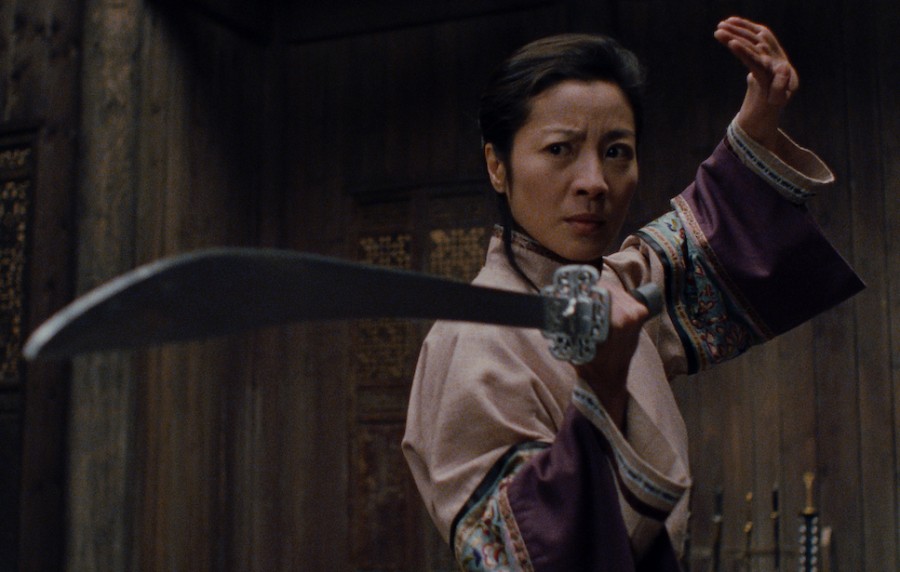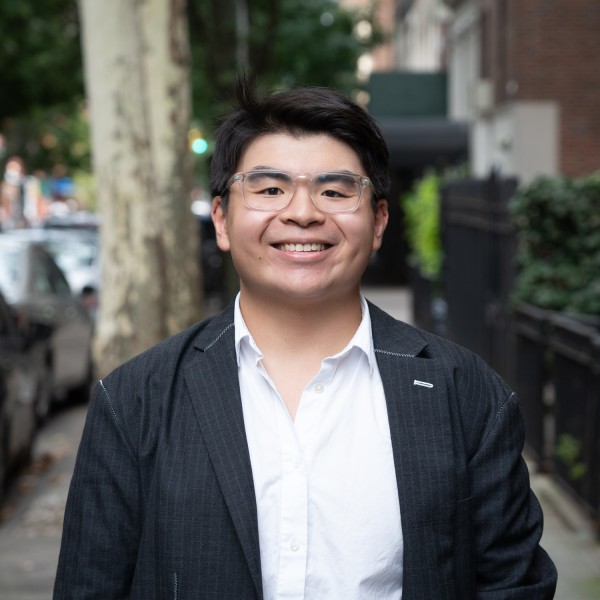Review: ‘Crouching Tiger, Hidden Dragon’ restoration immortalizes a masterpiece
The 4K restoration of Ang Lee’s monumental martial arts classic “Crouching Tiger, Hidden Dragon” by Sony Pictures Classics further cements the film’s indelible legacy. The film will be playing in select theaters starting Feb. 17.
The new 4K restoration of the martial arts film “Crouching Tiger, Hidden Dragon” brings the film back to new audiences. (Courtesy of Sony Pictures Classics)
February 17, 2023
Ang Lee’s “Crouching Tiger, Hidden Dragon” (2000), revitalized by a new 4K restoration, remains one of the most timeless and transformative entries into the canon of martial arts cinema. From its flawless wire-suspended combat (wire fu) fight choreography to career-defining performances by screen legends Michelle Yeoh, Chow Yun-Fat and Zhang Ziyi, Lee’s epic tale of lovers and enemies hiding in plain sight retains its status as the golden standard for the Wuxia genre.
Restored by Sony Pictures Classics, the latest release of “Crouching Tiger, Hidden Dragon” is presented in its most visually captivating form. Adapted from the novel of the same name, the film, filled with youthful rebellion, generational grudges and repressed longing, unfolds over ethereal sweeping shots of China’s pristine landscapes. Picturesque scenes in the vast expanse of the Gobi Desert and the lush flora of the Huangshan region immerse audiences into the mystique of this fantasy dreamscape, reminiscent of the vivid 山水画 (translated as mountain and sea paintings) of the early dynastic periods. Dynamic fight sequences feel all the more stimulating thanks to brilliant choreography, while the film’s many moments of contemplative stillness are crystallized in breathtakingly crisp quality.
One aspect of the film that has stood the test of time are its several complex and immaculate action set pieces. Choreographed by Hong Kong cinema legend Yuen Woo-ping, who also worked on films like “The Matrix” (1999) and “Drunken Master” (1978), each on-screen brawl walks a fine line between portraying an elegant ballet recital and serving as a brutal display of violence.
While the film is certainly cutting edge and innovative, the use of traditional conventions like wire fu pays homage to the revolutionary craftsmanship displayed in its foundational predecessors, especially the plethora of martial arts films that were produced by the Shaw Brothers Studio. Entire set pieces like Yu Jiao Long’s (Zhang Ziyi) showdown at the inn are inspired by legendary Hong Kong director King Hu’s essential martial arts film “Dragon Inn” (1967). The synthesis of homage and fresh aesthetics make the action sequences of “Crouching Tiger, Hidden Dragon” distinctive; very few of its successors have even come close to emulating its graceful yet aggressive kinetic qualities.
Perhaps even more compelling than its depiction of clashing swords is the dual romance that lies at the core of this film. Lee illustrates both the restrained passion of two aging masters, Li Mu Bai (Chow Yun-Fat) and Yu Xiu Lian (Yeoh), and the fiery, forbidden affair between Yu Jiao Long and Luo Xiao Hu (Chang Chen). Through these two central relationships, Lee explores romantic longing and hidden desires, while also challenging traditional representations of gender and presenting love as an act of defiance.
While having a romance within a martial arts film is not uncommon, one of the film’s long-lasting contributions is its presentation of two complex female leads who often act outside the gender norms peddled by men. They are both clearly able to hold their own and even best their counterparts in combat. However, instead of reducing both characters to one-dimensional female heroines, both Zhang and Yeoh highlight the vulnerabilities, regret and self-doubt which consume these women in different ways. This tangled web of desires and duties allows for each actor to deliver incredibly nuanced and heart-wrenching performances that have left a mark on the contemporary action films that followed it.
The film also acts as a moment of convergence between the old guard and a new generation of Chinese language cinema icons. It is fitting that Yeoh and Chow played the roles of two skilled martial artists at a major turning point, late in their careers. By the time of the film’s release in 2000, Yeoh and Chow had reached their peaks as celebrity superstars among Chinese-speaking communities around the world. Actors of their generation were pivotal in the decades of a flourishing Sinophone film industry; at the dawn of a new millennium, the potential of Chinese language cinema seemed to be limitless. Mirroring the film’s theme of passing down ancient legacies and duties, both actors symbolically pass the torch to the new vanguard of emerging actors represented by Zhang Ziyi and Chen, both of whom have blossomed into acclaimed actors in their own right. By presenting the audience with the old and the new, this film does not only signal the end of an epoch, but also a brave step into an uncertain future.
The release of “Crouching Tiger, Hidden Dragon” 23 years ago marked a defining cultural moment for both the Sinosphere and international cinema lovers. While many great films have been released since the turn of the century, few can match the grand and poetic scale that Lee achieved in his magnum opus. With this 4K restoration of the film, audiences once again get to experience what is arguably the pinnacle of martial arts cinema.
Contact Mick Gaw at [email protected].


























































































































































